“Work on historic buildings is much more difficult than designing new ones,” says Christina Seilern, founder of London-based Studio Seilern Architects. “Everything you do is scrutinized in minute detail, and there’s always the fear of getting it wrong.” As she recounts the 13-year project to create 143,000 square feet of apartments, offices, and leisure facilities from an 18th-century hospital in Vilnius, the capital of Lithuania, one can see what she means. The architects’ bold approach to a sensitive setting required confidence and strong powers of persuasion, but the harmonious accord between restored structures and imaginative additions should put any doubts to bed.
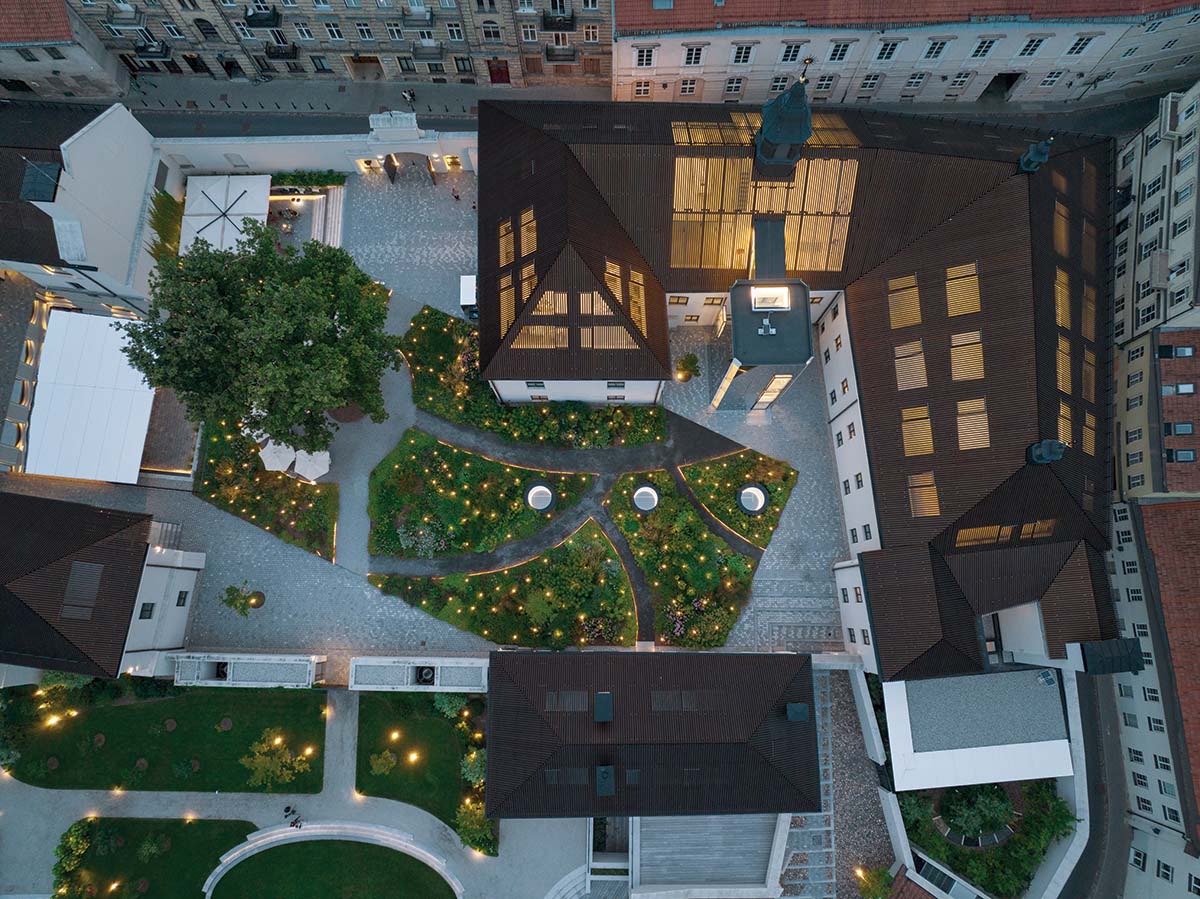
The complex’s skylights are visible primarily at night. Photo © Roland Halbe, click to enlarge.
Located on Bokšto Street in the heart of the Old Town, a UNESCO World Heritage Site, the walled compound that Seilern first encountered comprised three large buildings in two U-shaped arrangements that define a spacious courtyard, with a smaller L-shaped structure on a lower terrace to the east. They had once been beautiful, with baroque architecture of the simplest, most austere kind, but were in terrible shape. Clumsy extensions were added in the 19th century, and the 20th century saw the roofs replaced with metal sheeting that eventually rusted, and most original features ripped out.
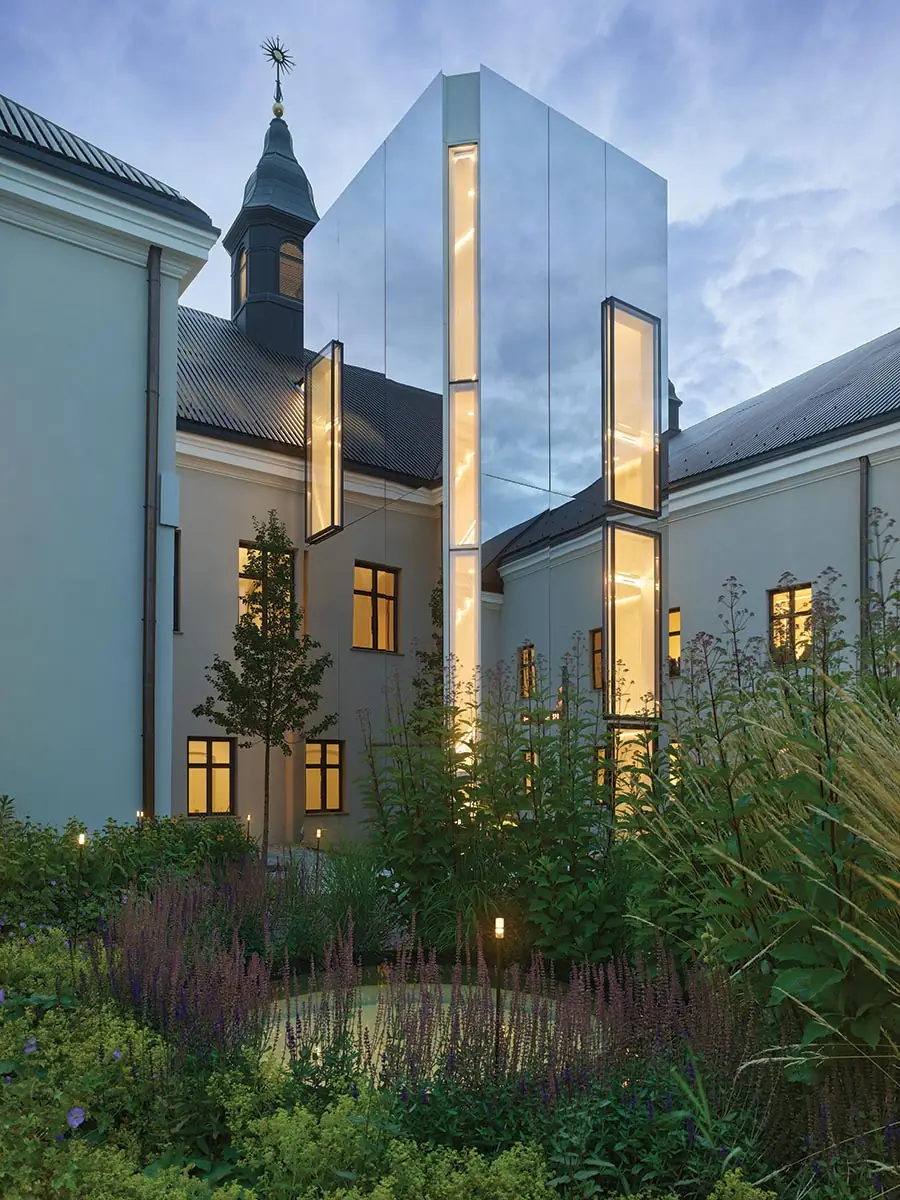
1
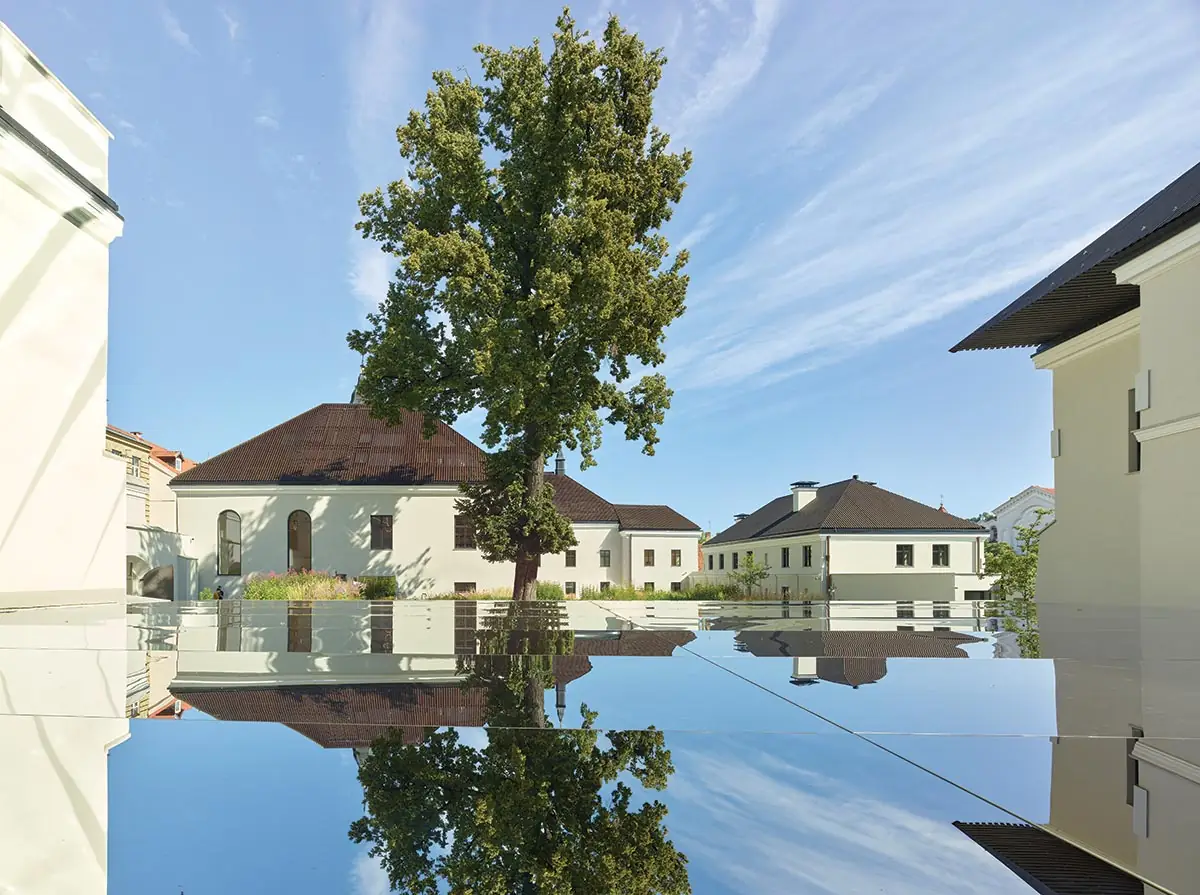
2
Polished steel on a stair tower (1) and the restaurant’s roof (2) identify these elements as insertions in the complex’s 18th-century fabric (top of page). Photos © Roland Halbe
The rotting complex had been entirely abandoned some years before it was acquired by Seilern’s client, who had moved from Switzerland to Lithuania soon after it gained independence from the Soviet Union in 1991. “He’s been very successful in business and wanted to give something back to the city,” says Seilern. “It’s a commercial development, but he saw it as a cultural project too.”
The architects began with forensic investigation of the derelict buildings, which sit over vaulted brick basements dating back to the 15th century. The process of discovery shaped ambitions for the project. Initial plans for a hotel were deemed too destructive; they gave way to a mix of uses suggested by the eccentric spaces.
The basement of the northern range would accommodate a spa, with an adjoining swimming pool below the courtyard. An elevator and stair tower serving both the spa and offices above would be installed outside the building, preserving the integrity of the original structure. Between the wings of the southern building, a new basement would be dug to make a restaurant, with a roof rising to about chest-height in the courtyard above to let daylight in. Parking sits beneath the lower terrace, filling a void left by extensive archaeological investigations.
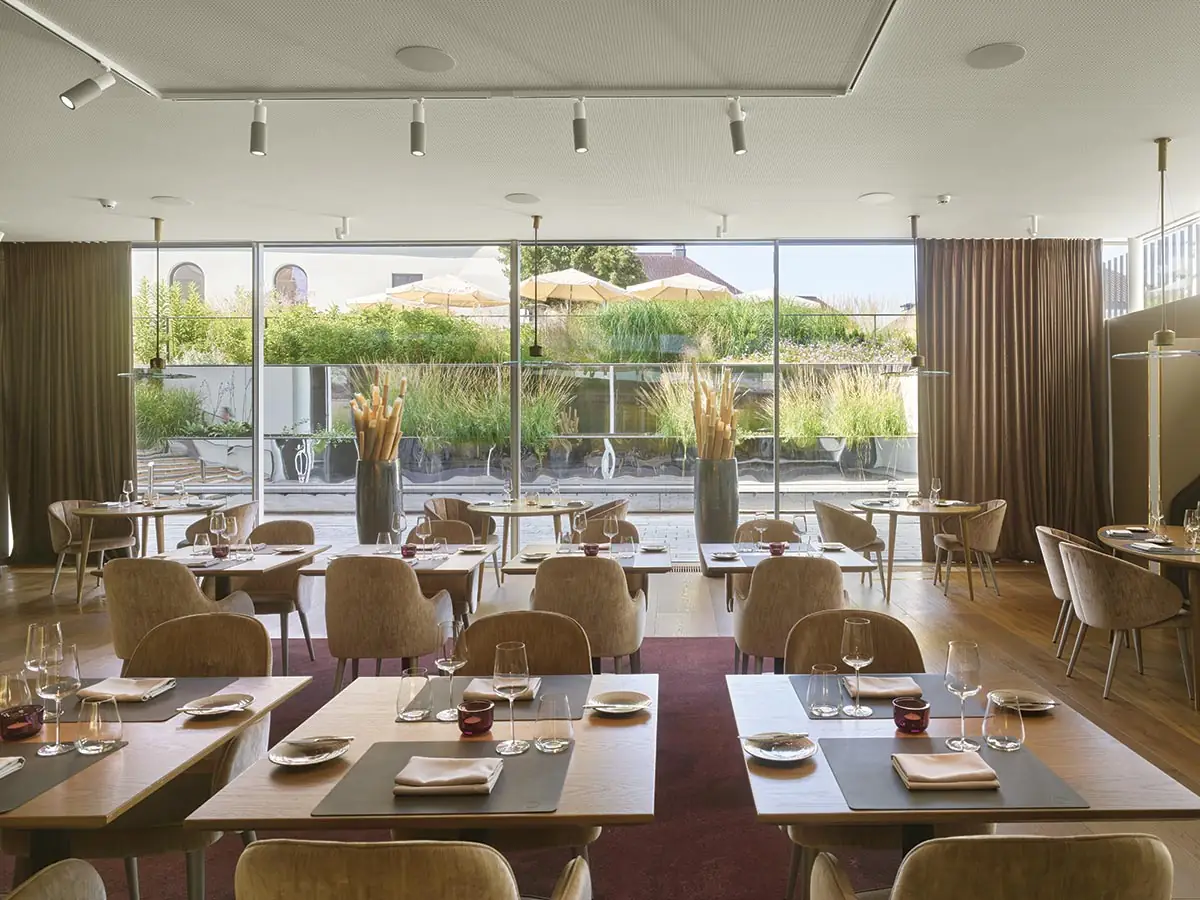
The restaurant looks out onto a terrace and the courtyard beyond. Photo © Roland Halbe
In parallel to this activity, the architects conceived a rationale for the design work: demolish where necessary to restore the clarity of the original composition, reveal the original fabric where possible, and give a clearly contemporary character to all additions. It’s an approach well founded in theories of architectural conservation, but one that conflicted with strict rules on development in the Old Town that reflect resentment at the neglect of Lithuanian heritage during the Soviet occupation. “They were very prescriptive, and encouraged historical pastiche,” says Seilern. “Crucially, though, the city representatives had strong academic backgrounds and would listen to arguments. It was a real battle, but we won more than we lost.”
Most controversial was Seilern’s proposal for new roofs. Rules insisted on clay tiles, but allowed skylights so that attic stories could be used. The architects argued that the essential character of the original buildings stemmed from the tension between the pale stucco facades and large, plain roofs, eventually winning an agreement for an ingenious alternative: setting windows behind close-spaced slats of bronze-anodized aluminum. While glass can be dimly discerned behind the dark metal veil, from a distance the expansive surfaces appear solid, and lend a sense of order and calm to the whole ensemble.
An equally creative approach was taken to the new structures in the courtyard, whose location was carefully justified by archival research showing where long-demolished buildings had once stood. Dressed in polished stainless steel, they are a mirror to their surroundings. Pin-sharp images of the baroque facades and dense planting in the courtyard gardens are reflected in the cladding of the elevator tower, so that the structure itself seems almost to disappear. Images of rooftops, scudding clouds, and the swaying canopy of an ancient linden tree animate the roof of the restaurant like the surface of a pond.
“We wanted to avoid either mimicking the existing architecture or the overt contrast often seen in additions to historic environments,” says Seilern. “Reflection is a form of homage to the buildings and captures the landscape too, emphasizing the importance of the courtyard in the original composition.”
An enjoyable play between the original architecture and new insertions continues throughout the interiors, but the distinction always remains clear. For new windows Seilern argued against the wood preferred by preservation authorities. “With triple-glazing, wood frames are too thick to be correct,” she says. “It’s like Botox: you can always tell.” Instead, a slender steel profile influenced by baroque details was developed with Vilnius-based Archinova, which acted as both heritage consultant and executive architect.
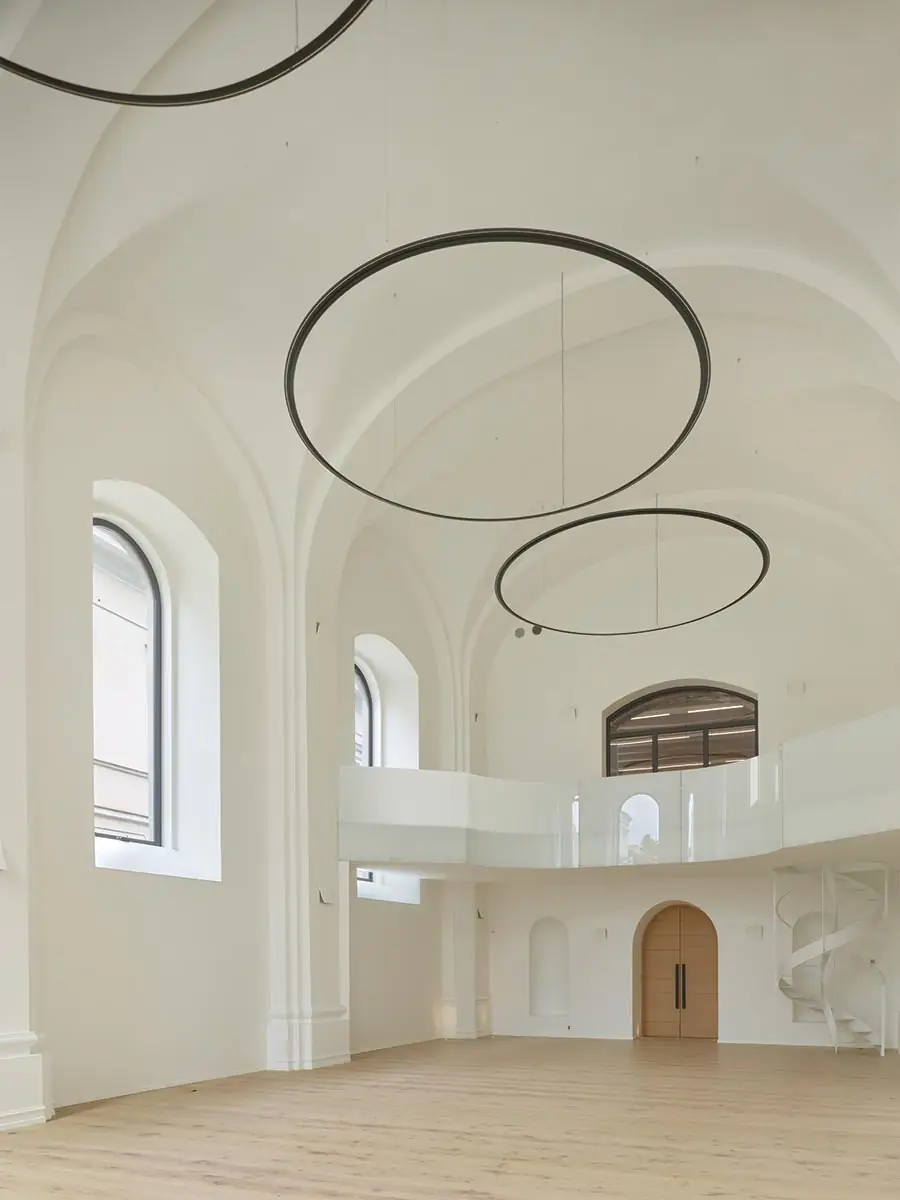
A former chapel is now an event space. Photo © Roland Halbe
Within the largest building, a former chapel is now a voluminous space for events and exhibitions. Any original decoration is long gone, but the vaulted form has been rediscovered and the curves echoed in the frameless glass balustrade of a reinstated choir loft.
Where evocative traces of historic fabric do survive—from gnarled beams to time-worn frescoes—they have been revealed, and the scarred surfaces contrasted with crisply detailed linings of warm oak, gray terrazzo, and monochrome steel. There’s a lovely moment where the exposed brick vault of the chapel pops up in a light-filled, double-height attic story, capped by a minimalist meeting room in glass and steel, and another in the spa where oak wainscoting zigzags through a succession of crazily distorted brick chambers.
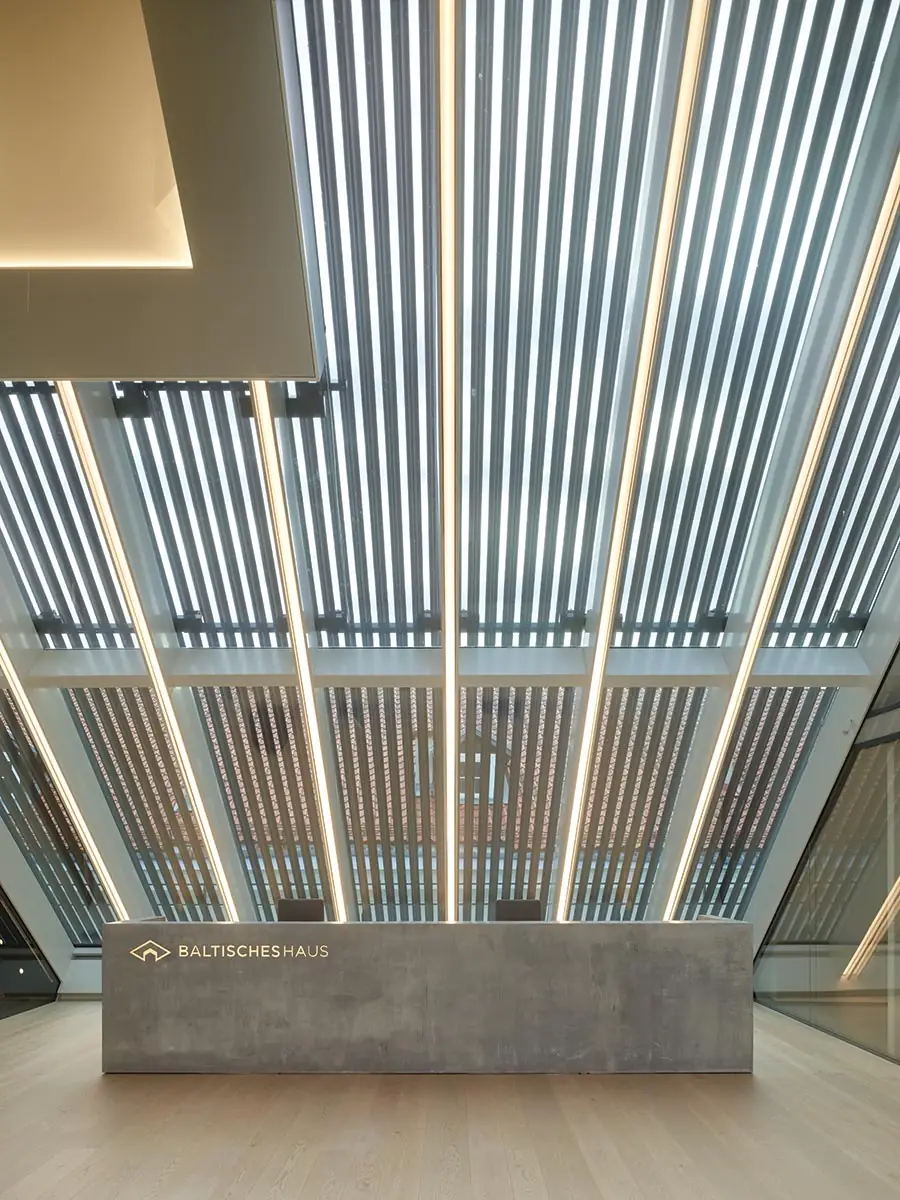
3
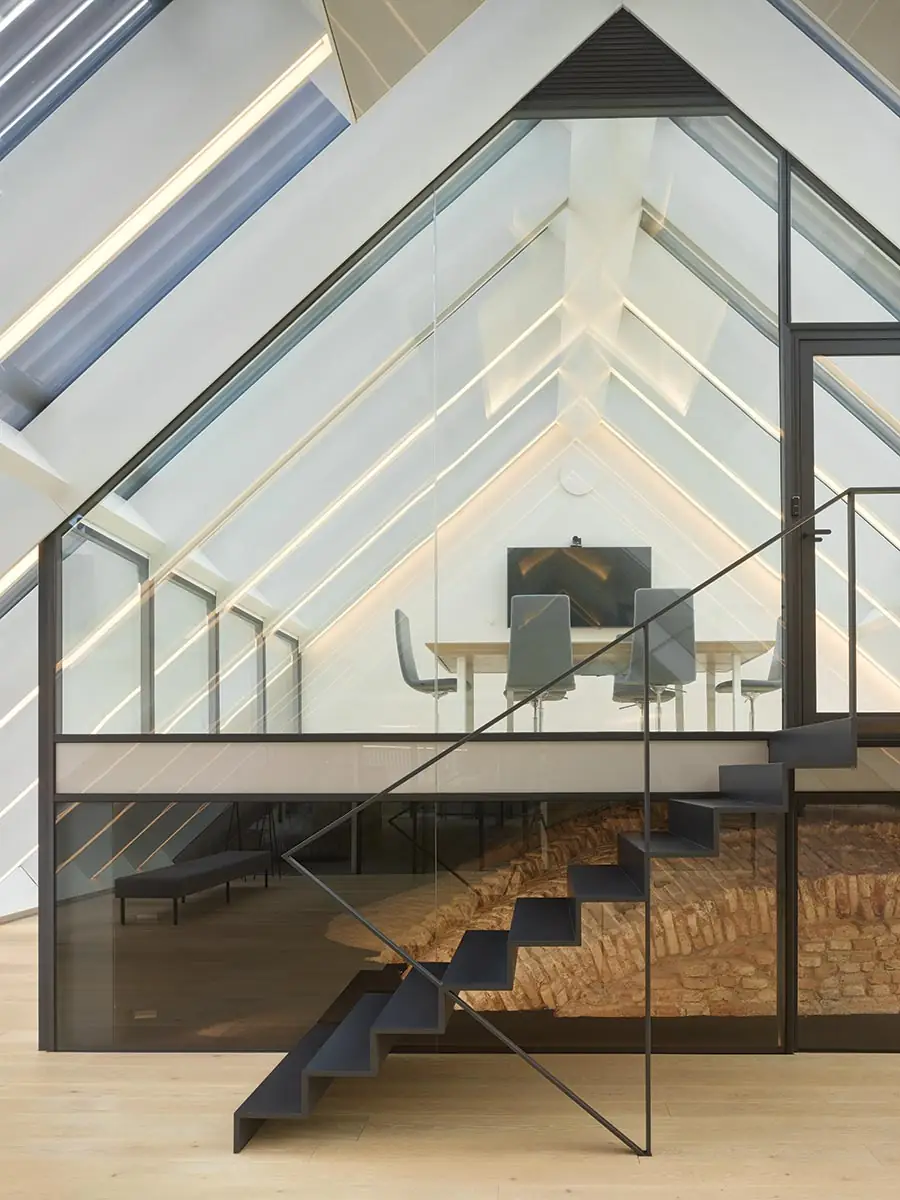
4
Within the attic space, the skylights sit behind aluminum slats (3) and a meeting room is enclosed in glass and steel (4). Photos © Roland Halbe
Seilern was tempted to leave that brickwork encrusted in ancient dirt—an idea quickly vetoed by the client. That’s understandable, but a pity. The patina of age is one thing the restored buildings lack. There were other compromises too, including the recreation of a long-lost clocktower and pedimented gateway. But for Seilern, the lengthy, complex project has come to a very happy conclusion. “I’m proud of the clarity that has been restored to the whole composition,” she says, “and in a fresh and contemporary manner. I still can’t believe we did it.”
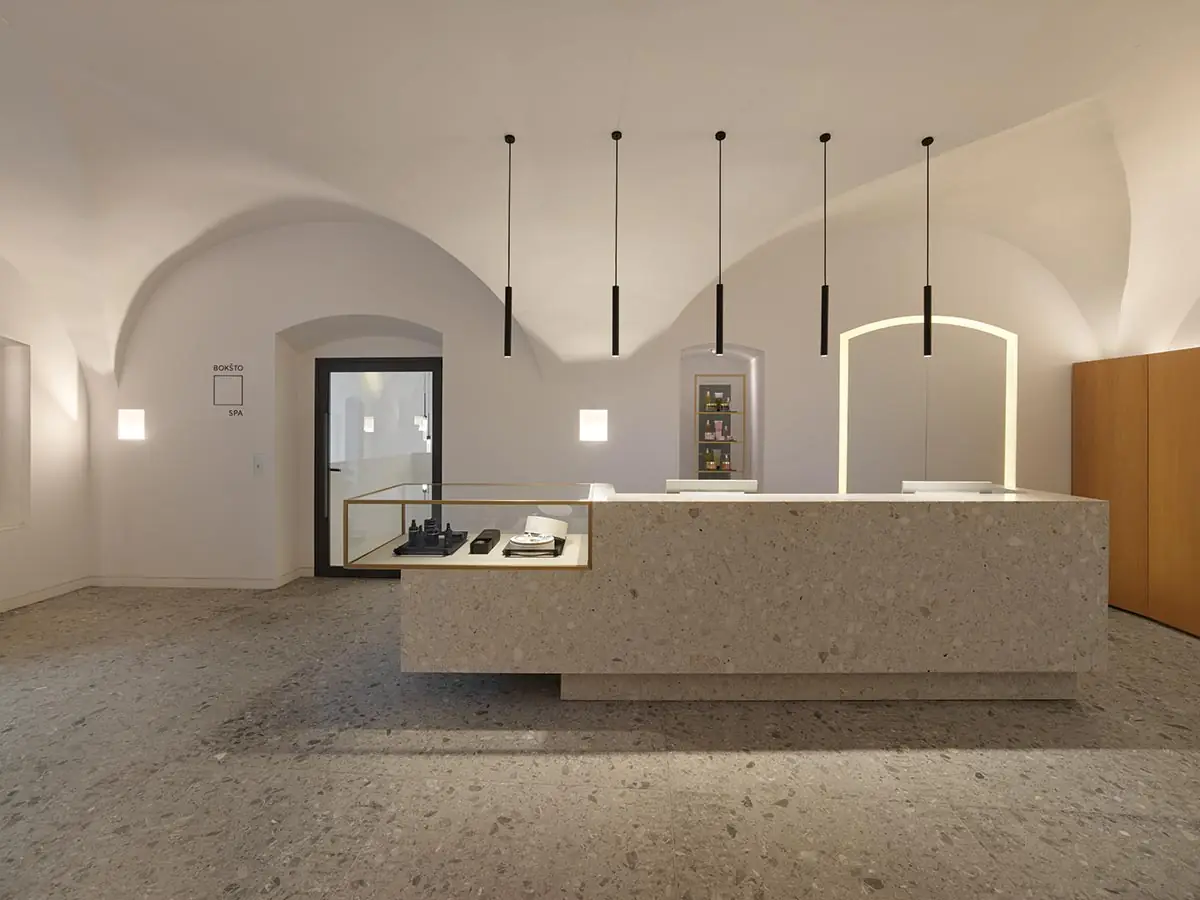
5
In the spa (5), a hallway zigzags through 15th-century vaults (6). Photos © Roland Halbe
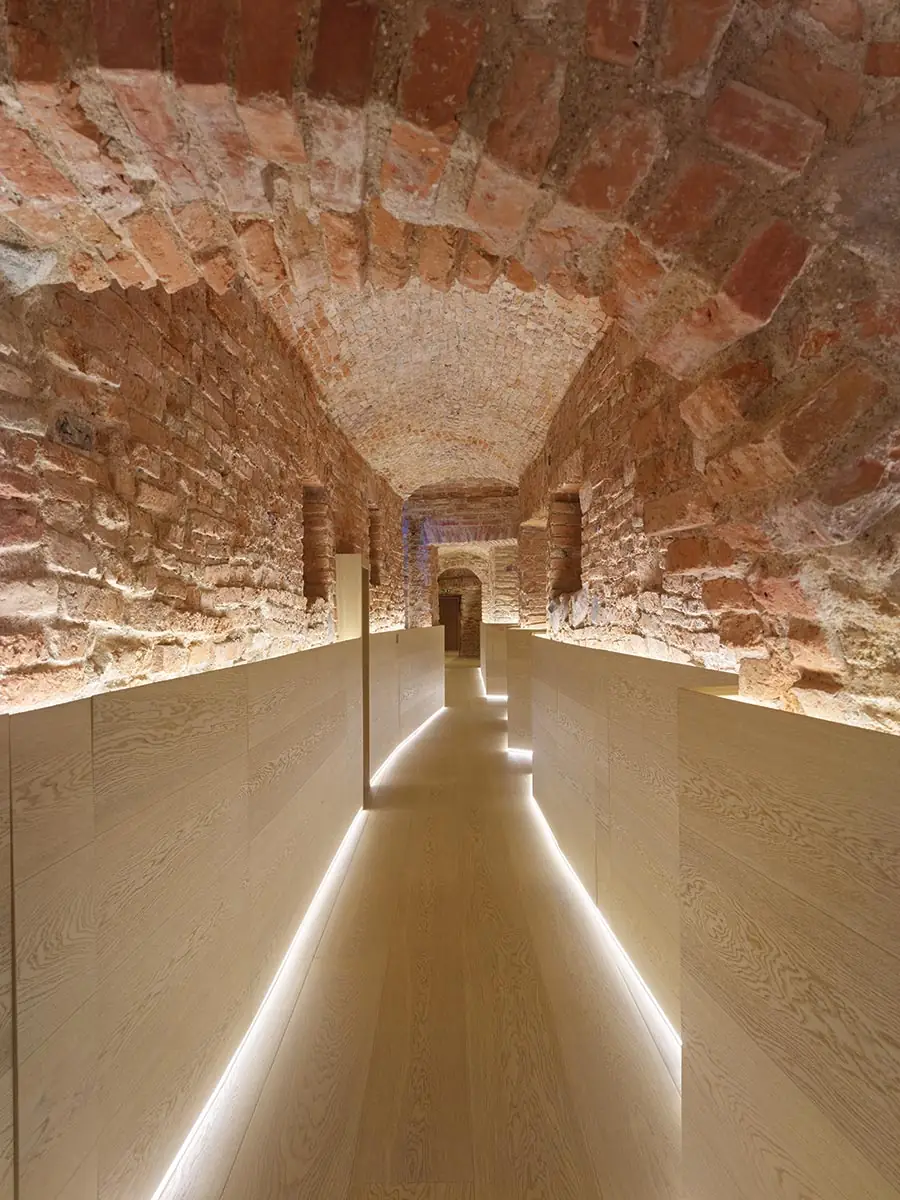
6
Click plans to enlarge
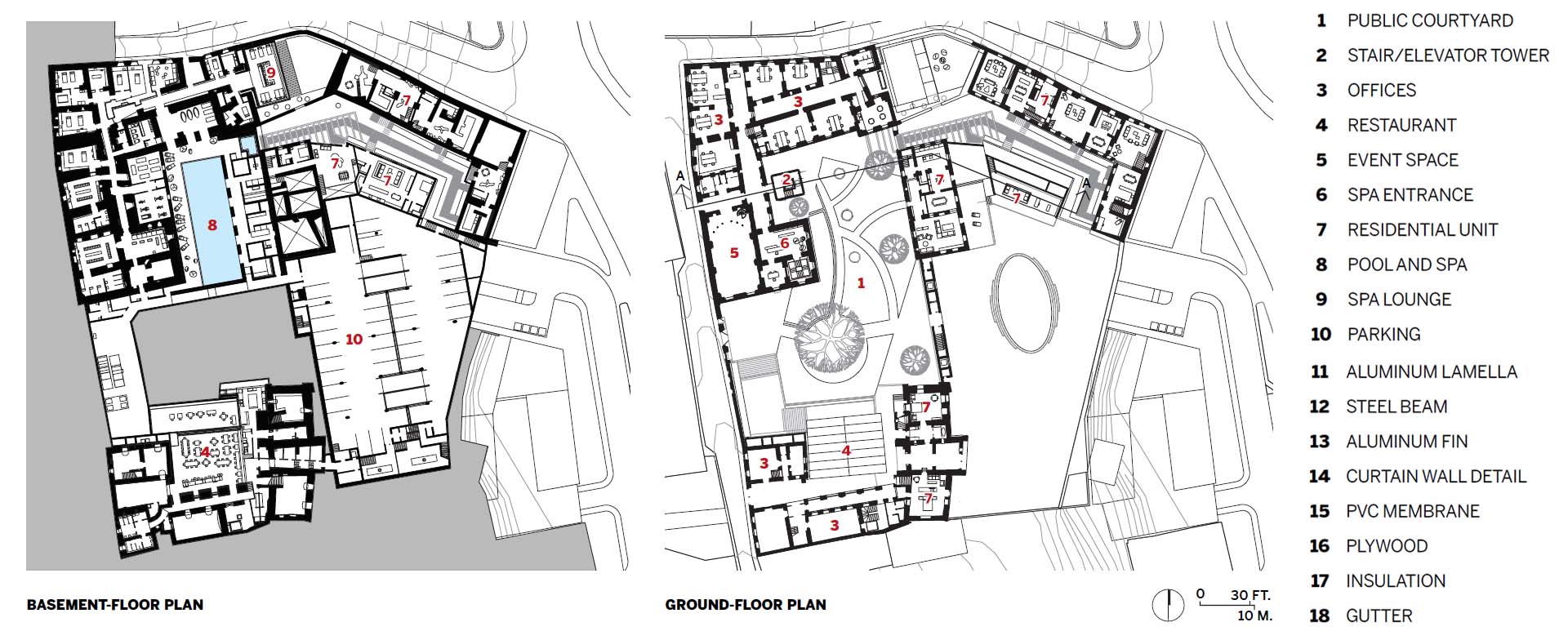
Click section to enlarge
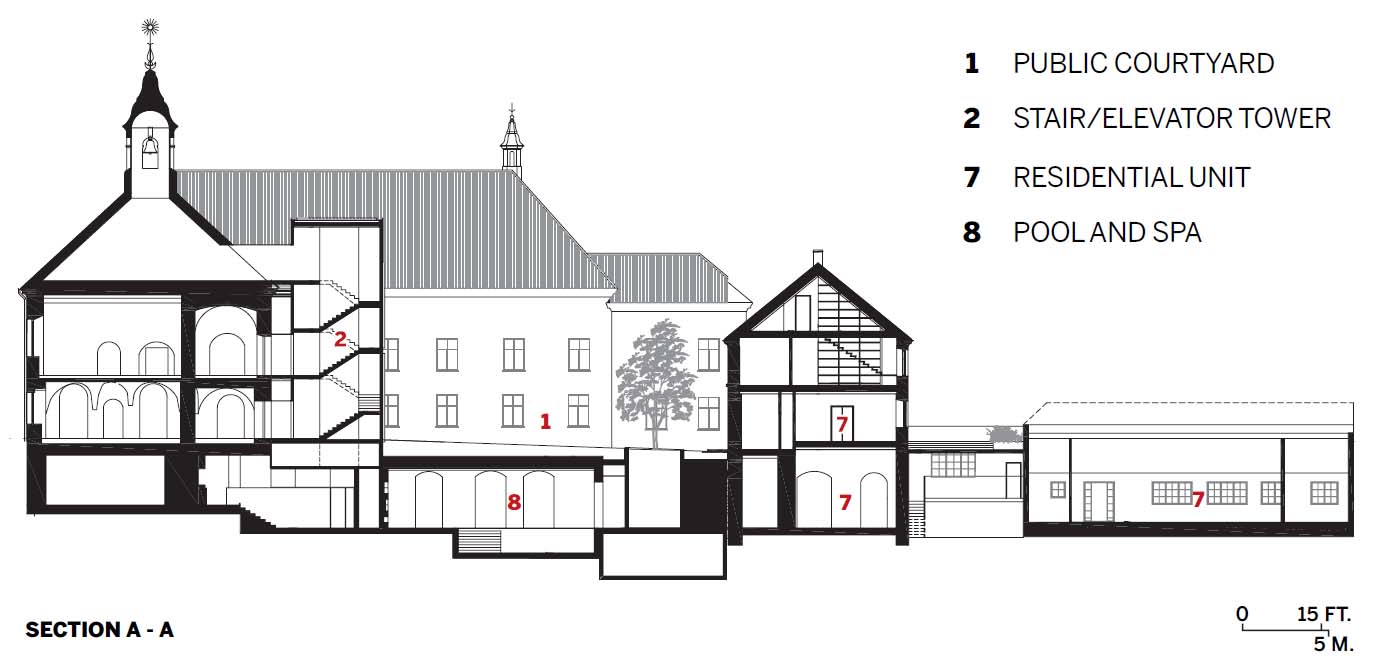
Click detail to enlarge
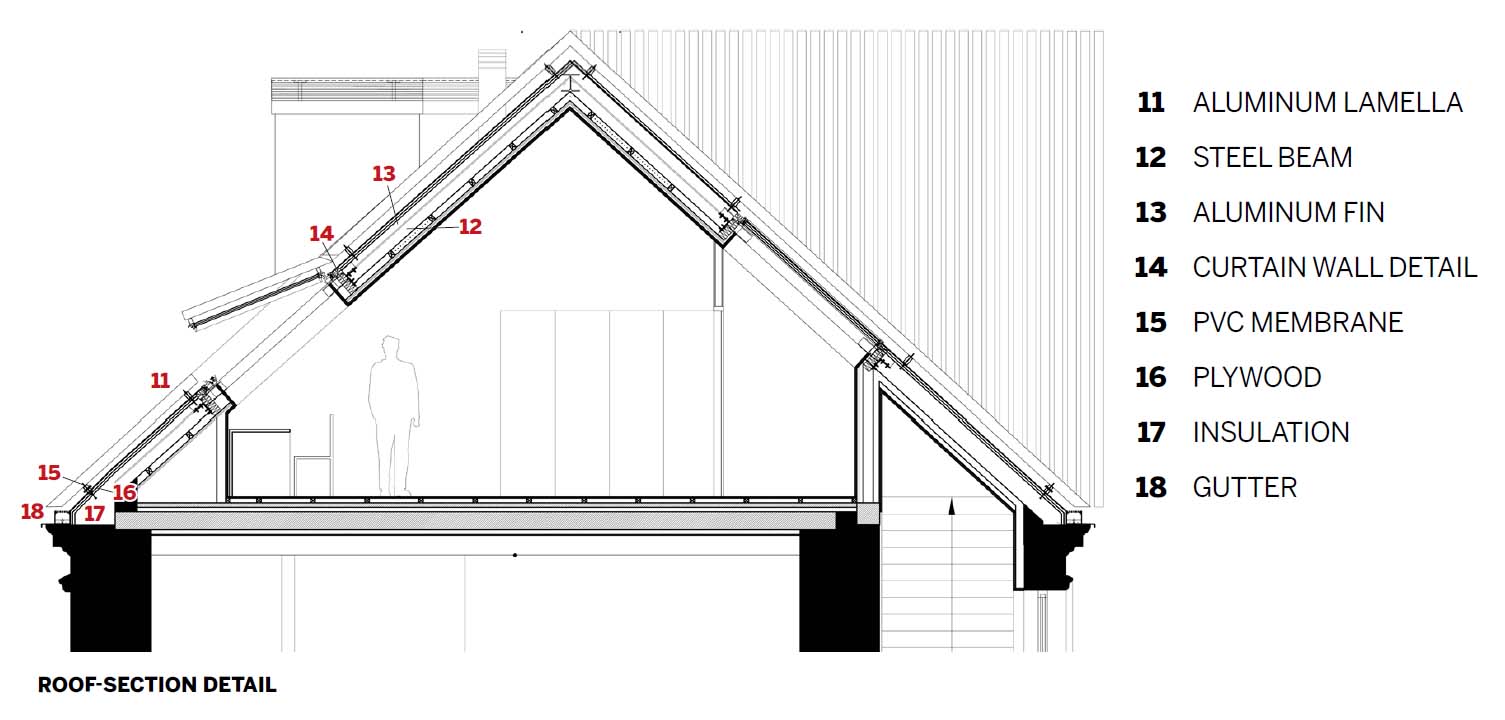
Credits
Architect:
Studio Seilern Architects — Christina Seilern, founder
Heritage and Executive Architect:
Archinova
Interior Designer:
Boksto SPA, ArchDesign
General Contractor:
PST
Consultants:
Elvora LT (structural); NIT Projektai (building services); Contestus (project management); Studio IBU (lighting)
Client:
Oliver Ortiz, Ogvy
Size:
143,000 square feet
Cost:
Withheld
Completion Date:
September 2022
Sources
Polished-Steel Cladding:
KIKUKAWA
Curtain Wall:
KGC Constructions
Windows:
GAMALANGAI, Jansen, SKYFRAME, Glass Engineering
Skylights:
Aliuminio Konstrukcijos
Hardware:
Dremler, Siedle
Custom Woodwork:
Joras
Floor and Wall Tile:
Vileka, Ogrinda
Lighting:
Sviesos Technologijos, ProLED, Topmet, Deltalight, Viabizzuno, Ares


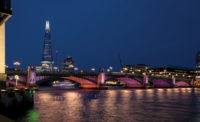

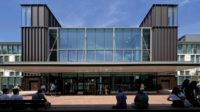
Post a comment to this article
Report Abusive Comment